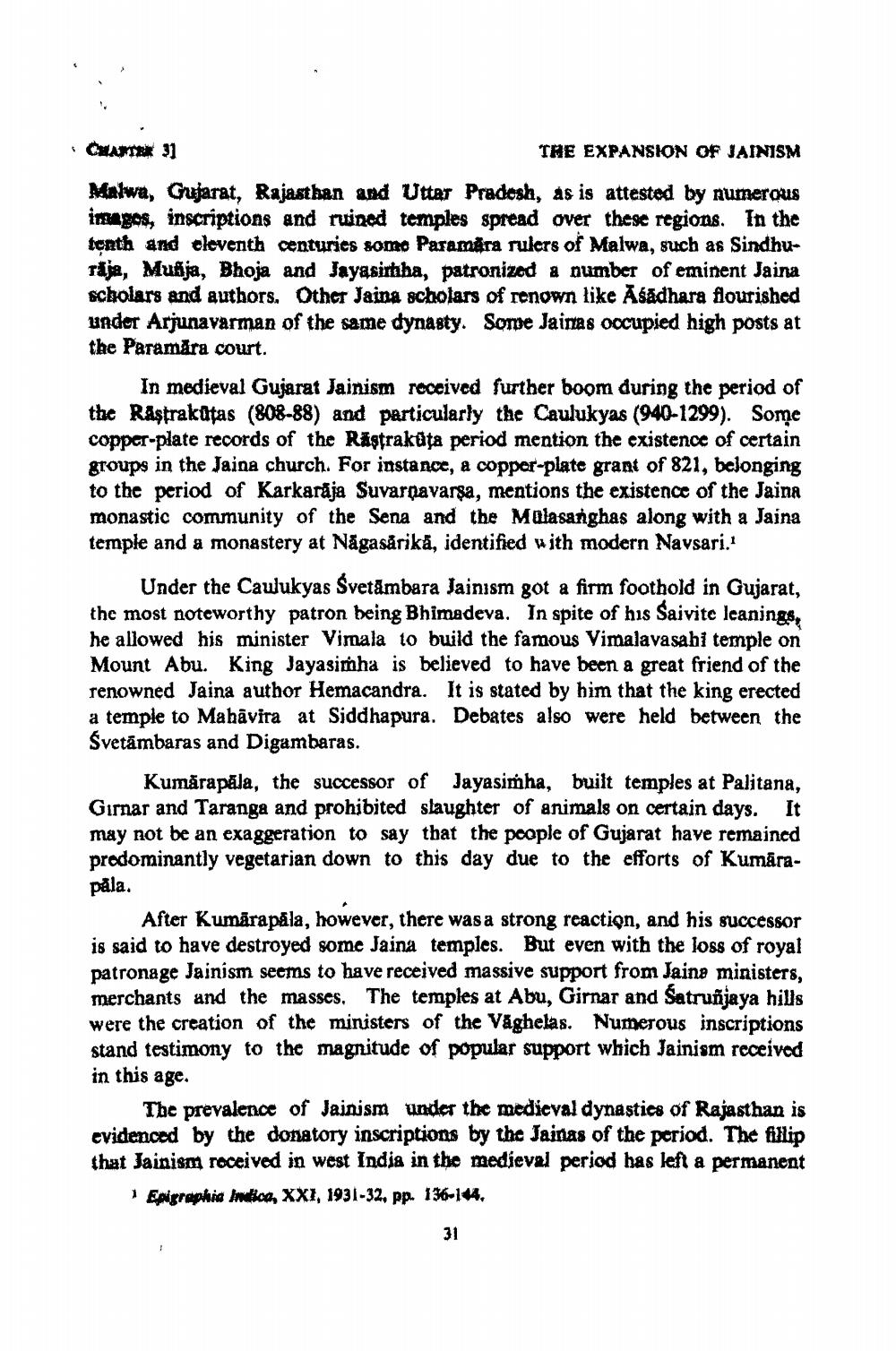________________
CHAPTER 31
THE EXPANSION OF JAINISM
Malwa, Gujarat, Rajasthan and Uttar Pradesh, as is attested by numerous images, inscriptions and ruined temples spread over these regions. In the tenth and eleventh centuries some Paramara rulers of Malwa, such as Sindhurāja, Muñja, Bhoja and Jayasirhha, patronized a number of eminent Jaina scholars and authors. Other Jaina scholars of renown like Asadhara flourished under Arjunavarman of the same dynasty. Some Jainas occupied high posts at the Paramāra court.
In medieval Gujarat Jainism received further boom during the period of the Rastrakutas (808-88) and particularly the Caulukyas (940-1299). Some copper-plate records of the Rästrakūta period mention the existence of certain groups in the Jaina church. For instance, a copper-plate grant of 821, belonging to the period of Karkarāja Suvarnavarsa, mentions the existence of the Jaina monastic community of the Sena and the Malasanghas along with a Jaina temple and a monastery at Nagasarikä, identified with modern Navsari.1
Under the Caulukyas Švetämbara Jainism got a firm foothold in Gujarat, the most noteworthy patron being Bhimadeva. In spite of his Saivite leanings, he allowed his minister Vimala to build the famous Vimalavasahi temple on Mount Abu. King Jayasimha is believed to have been a great friend of the renowned Jaina author Hemacandra. It is stated by him that the king erected a temple to Mahavira at Siddhapura. Debates also were held between the Svetambaras and Digambaras.
Kumarapala, the successor of Jayasimha, built temples at Palitana, Girnar and Taranga and prohibited slaughter of animals on certain days. It may not be an exaggeration to say that the people of Gujarat have remained predominantly vegetarian down to this day due to the efforts of Kumarapāla.
After Kumarapala, however, there was a strong reaction, and his successor is said to have destroyed some Jaina temples. But even with the loss of royal patronage Jainism seems to have received massive support from Jaine ministers, merchants and the masses. The temples at Abu, Girnar and Satruñjaya hills were the creation of the ministers of the Vaghelas. Numerous inscriptions stand testimony to the magnitude of popular support which Jainism received in this age.
The prevalence of Jainism under the medieval dynasties of Rajasthan is evidenced by the donatory inscriptions by the Jainas of the period. The fillip that Jainism received in west India in the medieval period has left a permanent
1 Epigraphia Indica, XXI, 1931-32, pp. 136-144.
31




